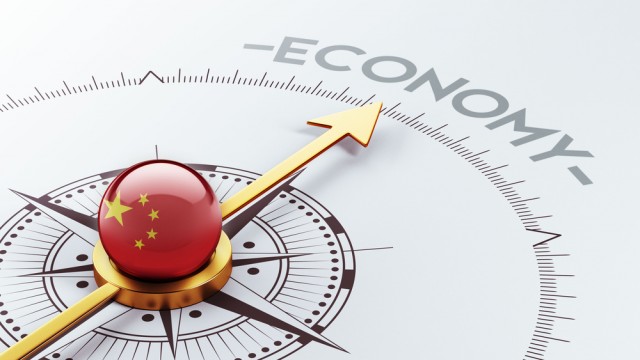There is a good chance that one day the Chinese economy will become the world’s largest. However, for the past 12 months investors have been bombarded with fearful news that Asia’s Power House is slowing down. Moreover, the hearts of investors have been bruised by the Chinese stock market unusual volatility, the lack of protection for foreign investors and the reluctance of the Chinese government to reduce its grip over the markets. In the face of international turmoil and such uncertainties, how should investors see China? The answer lies in the fundamentals of its economy.

The Chinese Economy before and after 1978
The year 1978 is embedded in China’s history as the crystallization of its economic reforms. Before 1978 the Chinese economy was driven by a development strategy of prioritizing heavy industries. As Justin Yifu Lin, Chief Economist and Senior Vice President of the World Bank, suggested in his book, Demystifying the Chinese Economy, heavy industries were capital intensive and severely lacked the technology needed to advance the economy at a sustainable rate. This economic strategy was accompanied by an institutional arrangement known as the trinity system. Firstly, the state had monopoly over the purchasing and marketing of agricultural products. As a result farmers had to fill the government’s quotas before they could sell their products to the market. Secondly, there was the regional self-sufficiency principle which ensured that each province was self-sufficient in terms of basic food: grains. Finally, the trinity system came with a household registration mechanism which discriminated between urban and rural residents. This economy strategy did not last long as it resulted in an agricultural crisis, impediment of the urbanization process and in an unbalanced economic structure across China (this can be seen in the irrational allocation of resources and in the fact that 70% of the employed labor force was in agriculture-according to the National Bureau of Statistics of China, data released in 1992).
The change started in December 1978 when the Third Plenary Session of the 11th Central Committee of the Communist Party of China formulated its vision for reform – to restructure the economic system and open it to more foreign trade. The Government started to welcome foreign trade and investment, started to reform its agricultural system by allowing a more liberal trade between the market and farmers, to limit its grip on enterprises and melt the impressively large State owned Enterprises which created principal-agent issues across industries. The achievements of the reforms cannot be denied: the economy is clearly more open and this is seen by the foreign trade-to-GDP ratio which increased from 9.5% in 1978 to 70% in 2003 according to the National Bureau of Statistics of China.
However, while considering this progress, what are the ‘chemicals’ that make an economy to move forward and be more stable?
The Economic Structure – needed chemistry
In China Goes Global: The Partial Power, David Shambaugh suggests that China still needs many elements before taking the crown of the world’s largest economy. What is he referring to? Broadly speaking there are four components of a powerful economy: factors of production – natural resources, labor force and capital, industrial structure – what industries are the ‘darlings’ of the financial system will dictate where the massive flows of money will go (the key is to support industries that add value in long-term), technology and the institutional system.
All these elements are necessary for a country’s economy to develop. However, there is one whose absence cannot be replaced by increasing the amount of others: technology. The power of technological innovation is exemplified by Nobel Economics Laureate, Theodor Schultz in his book Transforming Traditional Agriculture in which he showed how technological developments can reduce costs, improve productivity and shift the need in the labor force within the agricultural system (nevertheless, the lessons are applicable across all industries). With this in mind, let us now examine the contemporary opportunities and difficulties that China expresses in its economic behaviour and what they might mean to investors.
Opportunities and challenges in China’s economic development
Socially and politically speaking the increase in income gap between the rural and urban residence creates tensions that can be felt at an economic level as it results in an inefficient use of resources and environmental imbalances across industries. These inefficiencies are amplified by the current transition stage from an export-based economy to a consumer-focused one – a stage in which the Chinese economy is currently in. Moreover, corruption remains one of the biggest concerns for foreign investors: naturally, you accept the risk that the company can go bankrupt and you might lose your capital. However, being ‘fooled’ by fraudulent satellite companies is an event that rests outside the risk territory and should be dealt with by the law. However, in China, the law is deeply unclear when it comes to such events.
Additionally, the lack of education and the information asymmetry are causing people to engage with the stock markets without the necessary knowledge. As August issue of China Report suggested, the volatility experiences in equity markets is largely due to large number of people trading securities in an irrational fashion and the lack of clear regulation of market activities amplifies it.
Moreover, to solve the technology problem, a country can either choose to develop its own technology or to import it. If the government chooses the first option, the R&D costs and risks might be too high at this point in its economic development for China. Therefore, as we have seen predominantly in the past, China prefers to import marketable R&D. Consequently, investors can spot two opportunities already:
Firstly, look for companies that conduct due diligence – this business will flourish in the future unless more transparency is brought in the protection system against corporate fraud. Secondly, you can choose to support domestic technological ‘hubs’ – they are in need of funding and if they succeed they are in a better position to profit from selling their technology than foreign companies because they know the psychology of the consumers better than anybody. Finally, do bear in mind that China is still one of the biggest consumers of energy. Therefore, successful, state-backed energy producers can be another interesting take to diversify your portfolio.















